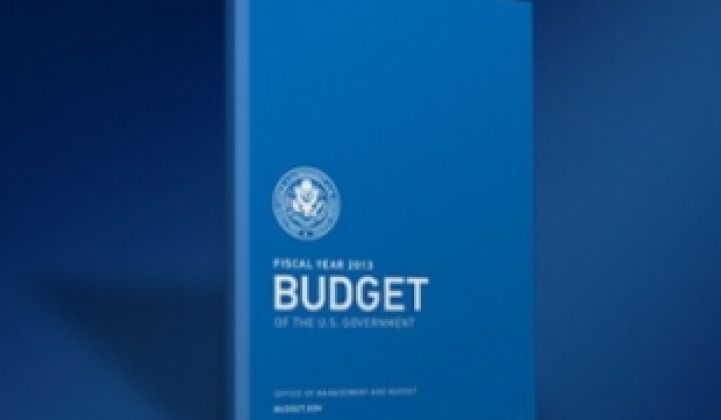The latest bill that funds the Department of Energy for 2013 cuts funding by 4 percent compared to President Barack Obama’s request. Just in time for Earth Day, renewable energy takes some of the biggest hits in the budget.
The bill was drafted by the U.S. House of Representitives appropriations subcommittee and must now be taken up by the full appropriations committee.
Despite the president’s call for an all-of-the-above energy strategy and a request for $27.2 billion for the DOE, the current bill sees a shift for more fossil fuels, including shale oil, and considerably less for renewables.
The DOE’s Energy Efficiency and Renewable Energy gets slashed about 17 percent to $1.38 billion compared to 2012, although the president requested a 30 percent increase. Representative Rodney Frelinghuysen (R-NJ), who chairs the subcommittee, said in a statement that the cuts would be applied to “research and development which is closest to deployment.”
However, plenty of mature technologies received increased funding, including an extra $207 million for the Fossil Energy program and no cuts for nuclear energy. Yucca Mountain also received $25 million, despite the fact that Obama has closed the site.
Representative Norm Dicks (D-WA) generally accepted the bill, but questioned the cuts to EERE and the Advanced Research Projects Agency-Energy, or ARPA-E. In 2012, ARPA-E received $255 million and the President requested that to be increased to $325 million for 2013. Instead, it has been knocked down to $200 million.
“I have concerns about the funding levels provided to certain accounts,” he said. “Of particular concern are the deep cuts to the Energy Efficiency & Renewable Energy program, as well as steep reductions to the ARPA-E program. These efforts are vital to our nation's innovation in the energy sector.”
For ARPA-E, the cuts will mean that the agency could turn to its deep-pocketed friend, the Department of Defense, which is investing in clean energy as a matter of security. For energy efficiency projects, innovative funding will have to come at more local levels, such as proposed on-bill financing in California or the new infrastructure trust in Chicago.
The cuts come at a time when some clean energy technologies, such as wind, are also seeing tax credits expire. For renewables, renewable portfolio standards will continue to drive demand on some level, even if federal investment wanes. When the president presented his 2013 budget, he noted that “the transition to clean energy has the potential to grow our economy and create millions of jobs -- but only if we accelerate that transition. Only if we seize the moment.”
Consider the moment not seized if the bill passes in its current form.



